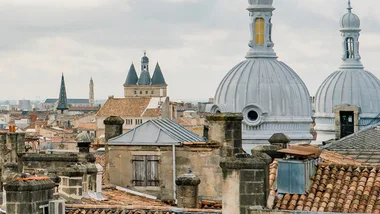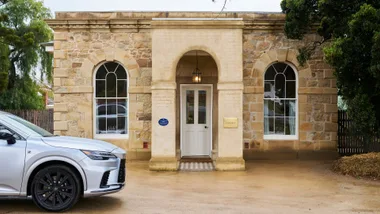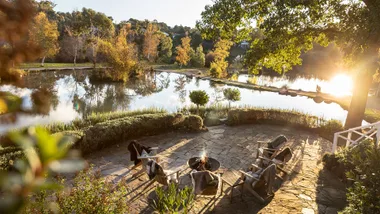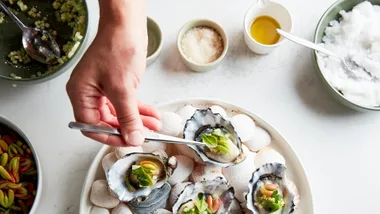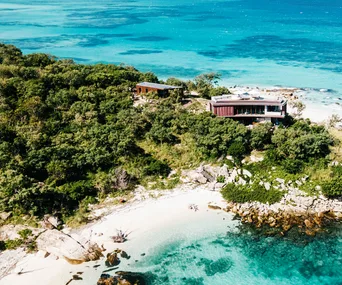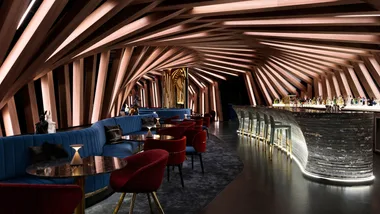If you’ve ever wondered where European chefs go on holiday in pursuit of amazing food, I can tell you: Emilia-Romagna in central Italy. This I know, because I have spent four glorious days road-tripping the region with three European culinary hotshots, a chance to get inspired and bond with fellow food obsessives, after one of the weirdest eras in hospitality history. Mention a trip to Emilia-Romagna to any Italian, and they’ll invariably send their eyes skyward with envy and murmur “oh, the food”, for this is the home of Prosciutto di Parma, Parmigiano-Reggiano cheese and aged balsamic vinegar of Modena. It’s also the birthplace of tortellini, piadina and Bolognese sauce (called ragù here; it’s only termed Bolognese when you’re far from Bologna). Italy has classified 138 of its homegrown food products as Protected Designation of Origin (DOP or Denominazione Origine Protetta), and a wildly disproportionate 44 of them are in Emilia-Romagna. Without the region’s farmers, butchers, cheesemakers, winemakers and chefs, Italian cuisine as we know it is hard to picture. This makes Emilia-Romagna a pilgrimage of sorts for passionate food lovers.
The Scottish chef Isaac McHale is an old friend of mine; we used to go clubbing together in our student days at Glasgow University, and I’ve proudly watched him become one of London’s most celebrated young chefs, head chef at two-Michelin-starred The Clove Club. McHale and Mauro Colagreco (the famed Argentinian chef at the three-Michelin-starred restaurant Le Mirazur in Menton, France) were invited to the region by the influential Italian food critic Andrea Petrini, who founded the avant-garde chef collective Gelinaz! and is Chair of the World Restaurant Awards judging panel. I adore visiting restaurants with chefs, because chefs greet each other with warm camaraderie and respect; there is so much respect for what the other can do. Also, I knew that for these four days, I wouldn’t have to make a single decision about what I eat. The right choices would be made for me. And I love delegating.
The first brilliant decision made for me is to meet the gang at Ristorante Cocchi in Parma, an art-filled traditional trattoria, where Petrini orders and overloads the table with asparagus and culatello tortellini, porcini salad, asparagus flan with parmesan cream and rabbit rillette. Over a bottle of blush-pink Medici Ermete Lambrusco, Petrini explains that Emilia-Romagna is geographically and figuratively in the heart of Italy, with the Adriatic Sea to the east, the Po River coursing through the centre, and the Ligurian and Tuscan Apennines to the west and south.

Fresh prosciutto and bread rolls in Emilia-Romagna
(Credit: Anna Hart)It’s associated with intellectualism and culture, thanks to prominent universities in the Medieval and Renaissance cities of Bologna, Parma and Ferrara. Giuseppe Verdi, Luciano Pavarotti and the filmmakers Federico Fellini and Bernardo Bertolucci were all born here. Today, it is one of Italy’s most wealthy regions, with Ferrari and Lamborghini both headquartered here; the region has always pedalled la dolce vita, and found willing buyers. Produce, people and ideas flowed along the River Po, says Petrini, and understanding the river is crucial for understanding the flavours of Emilia-Romagna. Producers became masters not just at producing, but at preserving. Parma ham, parmesan cheese, many delicacies here are about “controlled decay”, as Petrini puts it.
Delicious decay is the best way to describe our visit, the next morning, to Antica Corte Pallavicina, a pig farm, hotel, Michelin-starred restaurant and “museum of culatello.” We’re welcomed by Massimo Spigaroli, one of Italy’s most renowned meat chefs. “Here we say the pig is like Verdi’s music: there is nothing to throw away,” he says of the region’s reverent nose-to-tail approach to cooking with pork. Culatello, however, is made with nothing but the finest hind leg cuts; “culo” is “buttocks” in Italian. Spigaroli shows us elaborately tied culatelli hanging in the cellars, with handwritten labels destining them to recognisable restaurants and royals: Prince Albert of Monaco, Alain Ducasse, King Charles III, Massimo Bottura, The Clintons.
Culatello is smaller, sweeter and brinier than its bigger cousin, Parma ham, with an aroma of sweet death redolent of the cellars kept perfectly humid by the fog that rolls off the Po River. “Geography is what makes this possible,” says Spigaroli. “Culatello wouldn’t exist without the river and the fog.” If you think a museum dedicated to ham is niche, we’re reliably informed that Modena’s Museum of Balsamic Vinegar is a worthy visit: local superstar chef Massimo Bottura stores his daughter Alexa’s balsamic barrels there.

Hanging legs of ham in the process of being dried for prosciutto.
(Photo: Anna Hart)We leave “Salami Castle,” as McHale has dubbed Antica Corte Pallavicina, and drive through the rolling hills, past the vast Renaissance Palazzo Ducale di Colorno, which during the 16th and 17th century housed countess Barbara Sanseverino, and her collection of artworks by Raphael, Titian, Mantegna and Correggio. “Today it’s a museum, but it’s also home to ALMA, the most famous culinary and hospitality school in Italy,” says Petrini. It’s decidedly Italian to host the country’s future generation of culinary stars in a Renaissance palace.
In the hamlet of Coloreto, just outside central Parma, we pull up to Trattoria Ai Due Platani, founded in the 1920s and firmly on the culinary road map since the 1960s. It’s here, on the outdoor terrace, that I fall in lust with a “summer lasagne” that veers away from the heavier ragù meat sauce, substituting it with bechamel and asparagus. Dessert, too, is a highlight, with freshly made ice-cream topped with Borsci San Marzano, a sweet medicinal liquor from Puglia. By “fresh” gelato, I mean fresh: the ice-cream emerges before our eyes, from a 1964 Carpigiani ice-cream maker: unsurprisingly, Bologna birthed the Rolls-Royce of ice-cream makers.
The next day, it’s time to pay our respects to cheese royalty, at the Antica Fattoria Scalabrini. Parmigiano-Reggiano cheese is Italy’s second-most recognisable food brand, defeated only by Nutella. These prestigious dairies are lovingly called “cathedrals of cheese”, housing towers of hundreds of 40-kilogram wheels that rest for between 12 and 60 months, waiting to be assessed, tapped and finally stamped by PDO inspectors. We sample a 30-month aged cheese that immediately has Mauro Colagreco talking to Ugo Scalabrini about supplying his restaurant in Menton.

Aging cheese wheels.
(Photo: Anna Hart)For McHale and Colagreco, meeting producers is the point of the trip, and we also visit family-run Casa Graziano, where Andrea and Federica Casa show us the ageing cellar for their Parma ham, and explain that the higher altitude and winds lends their cellar just the right climate to cure hams to perfection. Everywhere we go, there’s a reverence for the specific geographic and climatic conditions that play their part, almost as if culatello, borgotaro mushrooms and Fragno truffles – who all owe their existence to the fog – are an act of God. For lunch, we settle in at Hostaria Da Ivan, a relaxed and much-loved local inn and restaurant, and feast on fried polenta, herb and ricotta tortellini, beef cheek in Barolo, and zabaglione, my favourite boozy custard dessert. We’ve been reliably informed this is the best restaurant in the region for tortellini, and it’s a triumph. Supposedly inspired by Venus’s bellybutton, these tiny parcels of seasonal delight are stuffed with porcini mushrooms and pumpkin topped with butter and sage in autumn; we’re here in late spring, aka asparagus and artichoke season, melded with creamy ricotta. We enthuse so wildly about the tortellini that Petrini arranges a pasta-making class for the afternoon, at Degusteria Romani in the heart of Parma.
Watching McHale fold tortellini after tortellini, eager as a schoolkid, I ask him a basic question: why he’s still so excited about Italy. Petrini and McHale first bonded 10 years ago over a shared appreciation of New Nordic cuisine. They’re both culinary rebels, fiercely forward-looking and yet they are in raptures over Italy’s most traditional trattorias and techniques. “Respecting tradition is the new luxury,” says McHale. “I’m excited by new things, but it’s respectful to also be excited by tradition.” In other parts of the world, McHale and Petrini agree, chefs run the risk of being called “old-fashioned and past it” for sticking with tradition or “pretentious and faddish” for being creative, but in Italy, both ends of the spectrum are celebrated. This is a conversation we continue during our final meal of the trip, at Osteria del Viandante in Rubiera, in the ramparts of the historic Forte Di Rubiera. It’s the most ravishing restaurant I’ve ever set foot in, as you’d expect from a restoration project by owner Marco Bizzarri, CEO of Gucci.
I wanted a break from making menu decisions; at Osteria del Viandante, all the best artistic decisions have been taken on my behalf too. Everything is impeccable. Devouring the dishes of young chef Jacopo Malpeli, we discuss why food, fashion, art and music are more closely intertwined in Italy than elsewhere. “In Italy, chefs are revered as artists,” says Petrini. “Italian food critics write about gastronomy as a thing of wonder, that brings joy and has cultural value,” agrees McHale. “The chef pushing boundaries and doing creative artistic food is thought of as relevant and valuable, but a traditional restaurant serving the same risotto Milanese and cotoletta is also revered.” This respect for cooking as an art form originated right here in Emilia-Romagna. Parmigiana-Reggiano, Parma ham and balsamic vinegar of Modena are all precious exports. But perhaps the biggest regional export of all is respect.

